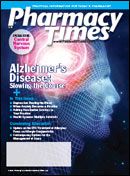Publication
Article
Pharmacy Times
Pharmacy Technology News
ePharmacy ProgramAddresses PharmacistShortage

Saint Luke's Health System has comeup with a strategy to address the growingshortage of pharmacists that savesmoney and increases patient safety.Two health-system members recentlylaunched a new ePharmacy program.
The program, which is live at Missouri'sHedrick Medical Center in Chillicotheand Wright Memorial Hospital in Trenton,uses state-of-the-art technology to provideremote overnight pharmacist coverageto several of Saint Luke's facilities.With ePharmacy, physician ordersare scanned to the pharmacist at theremote location. The pharmacist on dutyreviews the orders and enters theminto the computer system, screening forpotential drug interactions and performingother clinical activities. The enteringof the order into the computer systemallows nurses to remove the medicationfrom automated dispensing cabinets.
Furthermore, the ePharmacy programaddresses a push by The Joint Commissionfor more pharmacist oversightto help eliminate medication errors.
Pharmacists Learn withVirtual Patient

Keele University's School of Pharmacy(Staffordshire, United Kingdom) has developeda virtual patient to help trainfuturepharmacists. The pharmacy studentsinteract with the computer-generatedcharacters to gain experience ineffective communication and decisionmaking.
The students talk with patients viavoice recognition technology or by typingquestions into a computer interface,and the patient responds verbally orwith a range of nonverbal gestures toindicate, for example, pain, stress, andanxiety. At the end of the session, thepatient gives feedback to the studentson their performance.
The virtual patient can be used toassess a number of conditions, suchas dyspepsia and hypertension. Whenethnicity, age, or sex is relevant to thetreatment, the case can be designed todemonstrate to students how such factorsare clinically important.
"Using the virtual patient allows us toexplore the full patient consultation andto let the student learn from mistakes ina safe environment that would not bepossible in real life," said Prof StephenChapman, head of the pharmacy school.
Family Health History ToolGets Updated
The recently released, updated, and improvedversion of the Surgeon General'sInternet-based family health history toolenables individuals to easily assembleand share family health information. Thetool also can help clinicians make betteruse of health history information so theycan provide more informed and personalizedcare to their patients.
Features of the new version of theSurgeon General's My Family HealthPortrait, released by the US Departmentof Health & Human Services, include:

- Consumer control and privacy. The family health history tools give individualsaccess to software thatbuilds a family health tree. Individualsdownload their information to theirown computer, giving them controlover how the information is used.
- Electronic health record (EHR) anddecision support readiness. Becausethe new tool is based on commonlyused standards, the information itgenerates is ready for use in EHRand personal health records. It canbe used in developing clinical decisionsoftware.
- Information sharing. Because theinformationis in an electronic form,it can easily be shared with relativesor practitioners. Relatives can addto the information, and a special reindexingfeature helps them easilystart their own history based on datain a history they received.
NACDS Supports HIT withExceptions
The Senate Committee on the Judiciaryrecently held a hearing on "Health IT:Protecting Americans' Privacy in theDigital Age." The National Association ofChain Drug Stores (NACDS) articulatedits support for health information technology(HIT) adoption in its comments tothe committee, but urged caution whenit comes to so-called privacy provisions.
"Chain pharmacy has been on theleading edge of the adoption of HITfor many years. We have been activelyinvolved in fostering the use of technologyto improve the quality of patient careand developing standards to allow theexponential growth of HIT in pharmacypractice," NACDS stated in the letter.
NACDS, however, continues to urgethat lawmakers reconsider many of theprivacy provisions in the pending legislation.







